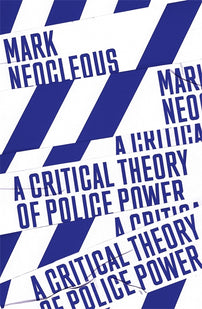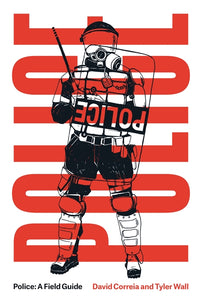The solution to police failure is not more police
The recently published report of the Casey Review into the internal culture of the Metropolitan Police has revealed the deep institutional failures of British policing. Calls in response for more police will only make the problems worse.

The recently published report of the Casey Review into the internal culture of the Metropolitan Police sets out in great detail its ‘institutional racism, misogyny and homophobia’. For those communities with the most day-to-day experience of policing, this is unlikely to come as a surprise. However, it was the arrest, rape and murder of Sarah Everard by a member of the Met’s elite Parliamentary and Diplomatic Protection (PaDP) branch, and the Met’s subsequent violent attack on women protesting in the case’s aftermath, that brought the Met and its culture into the spotlight, prompting the commissioning of the review.
The scandals surrounding the Met haven’t stop there. While the review was ongoing, a police culture of strip-searching children was revealed; widespread racist, homophobic and sexist banter in police WhatsApp groups was exposed; and another officer from the PaDP pleaded guilty to 85 serious offences, including 48 individual cases of rape. Taken alongside the police response to Black Lives Matter protests, the ongoing SpyCops inquiry and the inquiry into the Daniel Morgan case – the unsolved murder of a private investigator from 1987, which found the force “institutionally corrupt” – the Met is facing a serious crisis of legitimacy.
Nowhere is this clearer than in PaDP. Since Everard’s murder, the branch has been subjected to withering exposure, and the Casey Review has now called for it to be ‘effectively disbanded’.
[book-strip index="1" style="buy"]
Likewise, the specialist firearms unit, MO19, is identified by Casey as having a ‘deeply troubling, toxic culture.’ Given MO19’s involvement in a number of controversial killings of Londoners it is chilling to read about ‘a widely held view in the Command and in the rest of the Met that firearms officers ‘need to be allowed’ to bend or break the rules. The inquiry also heard ‘of one senior Met officer telling others in their chain of command that it was acceptable to ‘colour outside the lines’ – to bend and break rules. Casey’s solution to the almost exclusively white and male MO19’s corrupt, sexist and racist culture is for its officers to be subjected to ‘new and higher vetting and behaviour standards’. No comment is made about how this culture may have affected operations or even the integrity of MO19 officer’s evidence to the inquests into those its officers have killed.
Despite highlighting PaDP and MO9 no mention is made of other specialist units such as counter terrorism command or Special Branch (whose officers and operations are currently the subject of the Undercover Policing inquiry). The police’s function of suppressing dissent is entirely absent.
Policing and police power are badly misunderstood in public discussion. Yet rather than dispel them, Casey seeks to reinforce these myths, arguing that the police were established to fight crime and to protect “us”, even claiming that they have traditionally operated impartially and with the public’s consent. In fact, as Mark Neocleous has detailed police have always been an instrument of the state, one whose function has been to enforce a particular order. Nowhere is this clearer than in the establishment of the oldest part of the Met, the Thames River Police, established in 1798 as a public/private partnership between the Home Office and the slavers of the West Indian Committee. State power was deployed to police river labourers in the interest of slavers whose wealth and power was based on the torture, labour, and premature death of enslaved Africans. Rather than governing by consent, the origins of the police lay in the need to establish and maintain the order required by an emerging capitalism.
31 years later, the Met was imposed on Londoners as part of the same project. The Met’s first task was to disrupt the moral economy of London’s streets, with unlicenced street trading and other informal economic activity was their prime target. Opportunities for work outside the new factories and workhouses, moving about freely as an unaccompanied woman, participating in traditional leisure activities, homelessness, or using public space to engage in political activity were all routinely suppressed by the new police. As well as imposing this day-to-day order, the new police confronted the threat that crowds posed to the political order often violently suppressing popular protest.
[book-strip index="2" style="buy"]
The consent that Casey claims characterised the establishment of the Met simply did not exist. In the first five years of the Met’s history, it was subject to three inquiries by parliament, the focus of which were themes strikingly similar to those of the current day: the Met’s violent suppression of a public meeting; its use of spies; and a wider inquiry into its officers’ abuse of their powers. In its first three years of operation, commissioners dismissed some 3,100 policemen, with over 2,000 resigning.
Policing has always required the targeting and suppression of those in society who potentially threaten the existing social order on the one hand and, on the other hand, the need to maximise the consent of the wider public. The former can compromise the latter, and when it does, police can face a legitimacy crisis. Inquires such as Casey’s, and Lord Scarman’s into the 1981 Brixton uprising/riots and Sir William Macpherson’s into the Met’s investigation of the murder of Stephen Lawrence before it, are responses to these crises. Whilst their conclusions and recommendations may resolve the immediate legitimacy crisis, the failings they expose inevitably reoccur.
It is in search of this legitimisation that the latest report claims to be independent. Despite this claim, Casey unashamedly declares on the first page that she is ‘fundamentally pro-police.’ It is from this perspective that she determines the review’s conclusions and its 16 recommendations. The proposals are primarily managerial, adopting a series of technical fixes, and studiously ignore wider social policy or any potential change to the police’s role in society. Little is said, for example, about the use of Tasers: introduced into the UK twenty years ago, their use by the police has steadily increased since. In 2020/21 they were recorded as being deployed in 34,429 incidents and discharged on at least 3,248 occasions across England and Wales. Police use of Tasers in England and Wales have so far resulted in 18 deaths. Casey’s concern is the disproportionate tasering of Black people, Tasers themselves are not seen as problematic.
The report notes in passing the overuse of strip searches on ‘certain communities,’ but focuses in more detail on the strip searching of children – in particular, the reputational damage to the Met following the strip searching of Child Q in a Hackney School in 2022. While Casey acknowledges the Children’s Commissioner’s report on Met’s strip searching of children, and notes the Runnymede Trust’s report calling for the ending of strip searching in schools, she limits herself to recommending police training on the adultification of (particularly Black) children. A report last week from the Children’s Commissioner on English police forces found further ‘evidence of deeply concerning practice’ including ‘strip searches being conducted in schools, police vehicles, and within public view’. A genuine concern for child protection would have led Casey to call for the police’s exclusion from schools.
Other absences from the report are mention of the policing of the Gypsy, Traveller and Roma community. Implicit in Casey’s report is the idea that the police are the solution to social problems. No consideration is given to the factors that cause either crime or criminalisation. Violence against women requires higher conviction rates rather than any fundamental change in gender relations, anti-social behaviour requires increase police presence not the re-establishment of youth services. The racism, homophobia and misogyny of the Met are ultimately about individual attitudes, and nothing to do with the state’s or the police’s structural racism, misogyny, homophobia and disablism.
[book-strip index="3" style="buy"]
For Casey the problem is ‘bad apples.’ This approach allows her to argue that it can be transformed by the new Commissioner, Mark Rowley, claiming his and his deputy’s appointment ‘mark a new, positive beginning for the Met’. To reinforce this focus on individual attitudes is a hundred-page section on discrimination.
Casey adopts four criteria to determine that the Met is institutionally racist: that there ‘are racists and people with racist attitudes within the organisation’; that ‘Black and ethnic minority officers and staff experience racism at work’; that ‘racism and racial biased are reinforced within Met systems’; and that the ‘Met under-protects and over-polices Black Londoners’. Whilst these are useful tests, they are no definition. Importantly, they seek to present institutional racism (and misogyny and homophobia) as an aberration. What is implicitly excluded is the possibility that discrimination is actually built into the very functions of the Met.
Although Casey refers briefly to the Met’s persecution of the gay community in the 20th century, she does not acknowledge the full extent of police violence or the sheer vigour of this persecution. The implicit presumption is that when the law criminalising homosexuality changed, the police should have effortlessly shed its homophobic attitudes and ‘queer bashing’ practices.
Police racism has been a constant feature of the Met’s history. To most Black and brown people, the idea of the Met not being racist is a novel concept, one from far outside their experience. Similarly, the endemic disablism which the report details without highlighting, and the misogyny that has always characterised the Met’s dealing with women experiencing sexual and domestic violence, as well as their bullying, bribing and raping of sex workers, are best understood as an ever-present feature of policing, not something that has gone wrong recently.
Casey’s proposals ‘to clean up the Met’; establish ‘a dedicated women’s protection service’; ‘create an overarching children’s strategy for London’; ‘apologise for past failings'; prioritise frontline policing; and make ‘a fundamental reset’ of its use of stop and search; are all superficially attractive. But what is never spelt out is that the report’s implementation will require considerable resources: the solution to police failure is more police. The reductions in front-line policing, which Casey wants, as a minimum, reversed, were largely a strategic choice to move resources to responses to sexual and domestic violence, areas which Casey wants expanding. For the Met the review is an invite to bid for more funding, more officers, and more powers. The long-term impact of Casey is unlikely to be on the Met’s racism, misogyny, homophobia, disablism or corruption, but that the Met will emerge better resourced and with enhanced powers.
The police exist to maintain the existing social order. They will not be diverted from this core function by reform. In 1979, the authors of Policing the Crisis responded to the question that, ‘given the present conditions, what are we to do now?’, by demanding we ‘do something about the “present conditions”.’ These present conditions, which the police maintain, ‘make the poor poor’ and ‘are precisely the same conditions which make the rich rich’. As we experience the intensification of austerity, growing industrial and social conflict and a state committed to strengthening police powers to supress protest it is time for change. Part of that change is questioning why the police exist, realising the harm they cause and committing to defunding the police in the short term and ultimately to their abolition.
John Moore is a writer and activist based in west Wales. Twitter: @Moore_J_M



